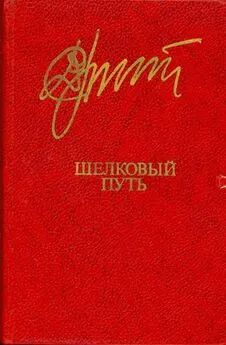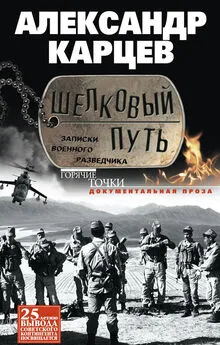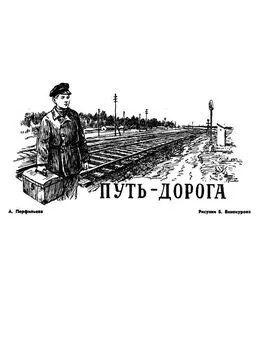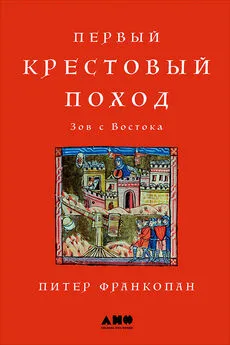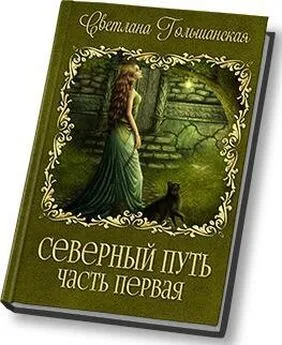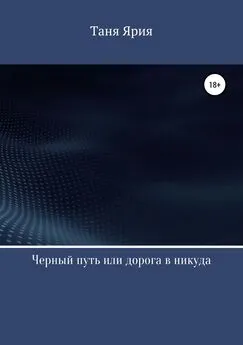Питер Франкопан - Шелковый путь. Дорога тканей, рабов, идей и религий
- Название:Шелковый путь. Дорога тканей, рабов, идей и религий
- Автор:
- Жанр:
- Издательство:Литагент 5 редакция
- Год:2017
- Город:Москва
- ISBN:978-5-699-95706-4
- Рейтинг:
- Избранное:Добавить в избранное
-
Отзывы:
-
Ваша оценка:
Питер Франкопан - Шелковый путь. Дорога тканей, рабов, идей и религий краткое содержание
Вы увидите, что история развивалась совсем не так, как мы привыкли изучать в школе. Так, столетия назад интеллектуальные центры мира, «Оксфорды» и «Кембриджи», «Гарварды» и «Йели», находились не в Европе, а в городах Средней Азии, куда и съезжалась вся просвещенная молодежь в поисках успеха.
Шелковый путь. Дорога тканей, рабов, идей и религий - читать онлайн бесплатно ознакомительный отрывок
Интервал:
Закладка:
780
A. Appadurai, ‘Introduction: Commodities and the Politics of Value’, in A. Appadurai (ed.), The Social Life of Things: Commodities in Cultural Perspective (Cambridge, 1986), рр. 3–63.
781
Francesco Pegolotti, Libro di divisamenti di paesi (e di misure di mercatantie), tr. H. Yule, Cathay and the Way Thither , 4 vols (London, 1913–1916), 3, рр. 151–155. Также см. здесь J. Aurell, ‘Reading Renaissance Merchants’ Handbooks: Confronting Professional Ethics and Social Identity’, in J. Ehmer and C. Lis (eds), The Idea of Work in Europe from Antiquity to Modern Times (Farnham, 2009), рр. 75–77.
782
R. Prazniak, ‘Siena on the Silk Roads: Ambrozio Lorenzetti and the Mongol Global Century, 1250–1350’, Journal of World History 21.2 (2010), рр. 179–181; M. Kupfer, ‘The Lost Wheel Map of Ambrogio Lorenzetti’, Art Bulletin 78.2 (1996), рр. 286–310.
783
Ibn Baṭṭūṭa, al-Riḥla , tr. H. Gibb, The Travels of Ibn Battuta , 4 vols (Cambridge, 1994), 4, 22, рр. 893–894.
784
E. Endicott-West, ‘The Yuan Government and Society’, Cambridge History of China , 6, рр. 599–560.
785
Allsen, Commodity and Exchange , рр. 31–39.
786
C. Salmon, ‘Les Persans à l’extrémité orientale de la route maritime (IIe a.e. – XVIIe siècle)’, Archipel 68 (2004), рр. 23–58; а также L. Yingsheng, ‘A Lingua Franca along the Silk Road: Persian Language in China between the 14th and the 16th Centuries’, in R. Kauz (ed.), Aspects of the Maritime Silk Road from the Persian Gulf to the East China Sea (Wiesbaden, 2010), рр. 87–95.
787
F. Hirth and W. Rockhill, Chau Ju-Kua: His Work on the Chinese and Arab Trade in the Twelfth and Thirteenth Centuries, Entitled Chu-fan-chi (St. Petersburg, 1911), рр. 124–125, 151, 142–143.
788
См. R. Kauz, ‘The Maritime Trade of Kish during the Mongol Period’, in Komaroff (ed.), Beyond the Legacy of Genghis Khan (Leiden, 2006), рр. 51–67.
789
Marco Polo, Le Devisament dou monde , tr. A. Moule and Р. Pelliot, The Description of the World , 2 vols (London, 1938); Ibn Baṭṭūṭa, 22, Travels , 4, р. 894.
790
О Марко Поло см. J. Critchley, Marco Polo’s Book (Aldershot, 1992), а также H. Vogel, Marco Polo was in China: New Evidence from Currencies, Salts and Revenues (Leiden, 2013).
791
C. Wake, ‘The Great Ocean-Going Ships of Southern China in the Age of Chinese Maritime Voyaging to India, Twelfth to Fifteenth Centuries’, International Journal of Maritime History 9.2 (1997), рр. 51–81.
792
E. Schafer, ‘Tang’, in K. Chang (ed.), Food in Chinese Culture: Anthropological and Historical Perspective (New Haven, 1977), рр. 85–140.
793
V. Tomalin, V. Sevakumar, M. Nair and Р. Gopi, ‘The Thaikkal-Kadakkarapally Boat: An Archaeological Example of Medieval Ship Building in the Western Indian Ocean’, International Journal of Nautical Archaeology 33.2 (2004), рр. 253–263.
794
R. von Glahn, Fountain of Fortune: Money and Monetary Policy in China 1000–1700 (Berkeley, 1996), р. 48.
795
A. Watson, ‘Back to Gold – and Silver’, Economic History Review 20.1 (1967), рр. 26–27; I. Blanchard, Mining, Metallurgy and Minting in the Middle Age: Continuing Afro-European Supremacy, 1250–1450 (Stuttgart, 2001), 3, рр. 945–948.
796
T. Sargent and F. Velde, The Big Problem of Small Change (Princeton, 2002), р. 166; J. Deyell, ‘The China Connection: Problems of Silver Supply in Medieval Bengal’, in J. Richards (ed.), Precious Metals in the Later Medieval and Early Modern World (Durham, NC, 1983); M. Allen, ‘The Volume of the English Currency, 1158–1470’, Economic History Review 54.4 (2001), рр. 606–607.
797
Реальный случай в Японии четырнадцатого века, A. Kuroda, ‘The Eurasian Silver Century, 1276–1359: Commensurability and Multiplicity’, Journal of Global History 4 (2009), рр. 245–269.
798
V. Fedorov, ‘Plague in Camels and its Prevention in the USSR’, Bulletin of the World Health Organisation 23 (1960), рр. 275–281. О более ранних экспериментах см. Цеисс А. Инфекционные заболевания у верблюдов, неизвестного до сих пор происхождения // Вестник микробиологии, эпидемиологии и паразитологии. – 1928.– № 7.1. – С. 98–105.
799
Boccaccio, Decamerone , tr. G. McWilliam, Decameron (London, 2003), р. 51.
800
T. Ben-Ari, S. Neerinckx, K. Gage, K. Kreppel, A. Laudisoit et al., ‘Plague and Climate: Scales Matter’, PLoS Pathog 7.9 (2011), рр. 1–6, а также B. Krasnov, I. Khokhlova, L. Fielden and N. Burdelova, ‘Effect of Air Temperature and Humidity on the Survival of Pre-Imaginal Stages of Two Flea Species (Siphonaptera: Pulicidae)’, Journal of Medical Entomology 38 (2001), рр. 629–637; К. Gage, T. Burkot, R. Eisen and E. Hayes, ‘Climate and Vector-Borne Diseases’, Americal Journal of Preventive Medicine 35 (2008), рр. 436–450.
801
N. Stenseth, N. Samia, H. Viljugrein, K. Kausrud, M. Begon et al., ‘Plague Dynamics are Driven by Climate Variation’, Proceedings of the National Academy of Sciences of the United States of America 103 (2006), рр. 13110–13115.
802
Некоторые ученые предполагают, что ранние находки были обнаружены на надгробиях на кладбищах в восточной части Кыргызстана, начиная с 1330-х годов, S. Berry and N. Gulade, ‘La Peste noire dans l’Occident chrétien et musulman, 1347–1353’, Canadian Bulletin of Medical History 25.2 (2008), р. 466. Однако это основано на недоразумении, см. J. Norris, ‘East or West? The Geographic Origin of the Black Death’, Bulletin of the History of Medicine 51 (1977), рр. 1–24.
803
Gabriele de’ Mussis, Historia de Morbo, in The Black Death, tr. R. Horrox (Manchester, 2001), рр. 14–17; M. Wheelis, ‘Biological Warfare at the 1346 Siege of Caffa’, Emerging Infectious Diseases 8.9 (2002), рр. 971–975.
804
M. de Piazza, Chronica , in Horrox, Black Death , рр. 35–41.
805
Anonimalle Chronicle , in Horrox, Black Death , р. 62.
806
John of Reading, Chronica , in Horrox, Black Death , р. 74.
807
Ibn al-Wardī, Risālat al-naba ʾ ʿ an al-waba ʾ, цитируется по B. Dols, The Black Death in the Middle East (Princeton, 1977), рр. 57–63.
808
M. Dods, ‘Ibn al-Wardi’s “Risalah al-naba” an al-waba’, in D. Kouymjian (ed.), Near Eastern Numismatics, Iconography, Epigraphy and History (Beirut, 1974), р. 454.
809
B. Dols, Black Death in the Middle East , рр. 160–161.
810
Boccaccio, Decameron , р. 50.
811
de’ Mussis, Historia de Morbo , р. 20; ‘Continuation Novimontensis’, in Monumenta Germaniae Historica, Scriptores , 9, р. 675.
812
John Clynn, Annalium Hibernae Chronicon , in Horrox, Black Death , р. 82.
813
Louis Heylgen, Breve Chronicon Clerici Anonymi , in Horrox, Black Death , рр. 41–42.
814
Horrox, Black Death , рр. 44, 117–118; Dols, Black Death in the Middle East , р. 126.
815
Bengt Knutsson, A Little Book for the Pestilence , in Horrox, Black Death , р. 176; John of Reading, Chronica , рр. 133–134.
816
S. Simonsohn (ed.), The Apostolic See and the Jews: Documents, 492–1404 (Toronto, 1988), 1, no. 373.
817
В целом см. здесь O. Benedictow, The Black Death, 1346–1353: The Complete History (Woodbridge, 2004), р. 380ff.
818
O. Benedictow, ‘Morbidity in Historical Plague Epidemics’, Population Studies 41 (1987), рр. 401–431; O. Benedictow, What Disease was Plague? On the Controversy over the Microbiological Identity of Plague Epidemics of the Past (Leiden, 2010), esр. р. 289ff.
819
Petrarch, Epistolae , in Horrox, Black Death , р. 248.
820
Historia Roffensis , in Horrox, Black Death , р. 70.
821
S. Pamuk, ‘Urban Real Wages around the Eastern Mediterranean in Comparative Perspective, 1100–2000’, Research in Economic History 12 (2005), рр. 213–232.
822
S. Pamuk, ‘The Black Death and the Origins of the “Great Divergence” across Europe, 1300–1600’, European Review of Economic History 11 (2007), рр. 308–309; S. Epstein, Freedom and Growth: The Rise of States and Markets in Europe, 1300–1750 (London, 2000), рр. 19–26, а также M. Bailey, ‘Demographic Decline in Late Medieval England: Some Thoughts on Recent Research’, Economic History Review 49 (1996), рр. 1–19.
823
H. Miskimin, The Economy of Early Renaissance Europe, 1300–1460 (Cambridge, 1975); D. Herlihy, The Black Death and the Transformation of the West (Cambridge, 1997).
824
D. Herlihy, ‘The Generation in Medieval History’, Viator 5 (1974), рр. 347–364.
825
О сокращении в Египте и Леванте – A. Sabra, Poverty and Charity in Medieval Islam: Mamluk Egypt 1250–1517 (Cambridge, 2000).
826
S. DeWitte, ‘Mortality Risk and Survival in the Aftermath of the Medieval Black Death’, Plos One 9.5 (2014), рр. 1–8. Об улучшении питания – T. Stone, ‘The Consumption of Field Crops in Late Medieval England’, in C. Woolgar, D. Serjeantson and T. Waldron (eds), Food in Medieval England: Diet and Nutrition (Oxford, 2006), рр. 11–26.
827
Epstein, Freedom and Growth , рр. 49–68; van Bavel, ‘People and Land: Rural Population Developments and Property Structures in the Low Countries, с. 1300 – c. 1600’, Continuity and Change 17 (2002), рр. 9–37.
Читать дальшеИнтервал:
Закладка:


